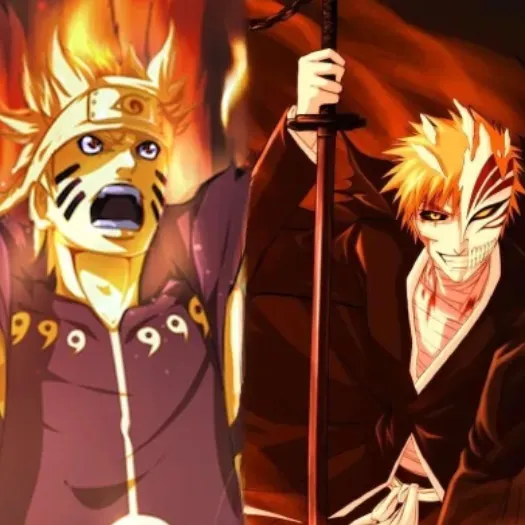ANIME GAMES
1 games in total.
Anime - CGUB
About Anime - CGUB
At its core, **Anime - CGUB** represents a fascinating intersection of Japanese animation and the digital realm. It embodies a specific aesthetic, often characterized by vibrant colors, dynamic action sequences, and emotionally resonant storytelling. Understanding its nuances requires delving into both the technical aspects of its creation and the cultural context from which it emerges.
The Cultural Significance of Anime in the Digital Age
Anime's journey from traditional hand-drawn animation to digitally produced content has significantly broadened its appeal and accessibility. The internet and streaming services have played pivotal roles, allowing global audiences to discover and appreciate a diverse range of anime series and films. This cultural exchange has fostered a vibrant online community dedicated to discussing, analyzing, and celebrating the art form.
Anime is more than just entertainment; it reflects Japanese culture, values, and societal trends. Many series explore complex themes such as identity, morality, and the relationship between technology and humanity. This depth of storytelling, coupled with compelling visuals, has resonated with viewers of all ages and backgrounds.
CGUB: Exploring the Underlying Technical Framework
**CGUB** likely references a specific production pipeline, studio, or technology associated with the creation of anime. Without direct access to the inner workings of the "Anime - CGUB" project, we can only speculate, however, we can analyze common industry practices.
Modern anime production increasingly relies on computer-generated imagery (CGI) to enhance traditional animation techniques. This allows for more complex camera movements, detailed character designs, and visually stunning special effects. The integration of CGI requires a skilled team of artists and technicians proficient in 3D modeling, texturing, lighting, and animation.
The specific software and hardware used in the **CGUB** pipeline are also crucial. Popular animation software packages such as Toon Boom Harmony, TVPaint, and Autodesk Maya are commonly used in the industry. These tools enable animators to create fluid movements, intricate details, and immersive environments.
Character Design and its Evolution within Anime
Character design forms the backbone of any successful anime series. The visual appearance of a character must not only be aesthetically pleasing but also convey their personality, backstory, and role within the narrative. Animators pay close attention to details such as facial expressions, body language, and clothing to create memorable and relatable characters.
Anime character designs have evolved significantly over the years, reflecting changing artistic styles and audience preferences. Early anime often featured simpler, more stylized character designs, while modern anime tends to incorporate more realistic proportions and intricate details. The use of "moe" aesthetics, characterized by cute and innocent-looking characters, has also become increasingly popular in recent years.
The Soundscape of Anime: Music, Voice Acting, and Sound Effects
The auditory experience of watching anime is just as important as the visual aspect. Music, voice acting, and sound effects work together to create a cohesive and immersive atmosphere. Original soundtracks (OSTs) play a vital role in setting the mood, heightening emotional impact, and enhancing the overall storytelling experience.
Japanese voice acting, known as "seiyuu," is a highly respected profession in Japan. Voice actors undergo rigorous training to master a wide range of vocal techniques and emotional expressions. Their performances can significantly impact the viewer's perception of a character and their connection to the story.
Sound effects are carefully crafted to bring the world of anime to life. From the clash of swords to the rustling of leaves, every sound is designed to enhance realism and create a sense of immersion. Sound designers often use a combination of real-world recordings and synthesized sounds to achieve the desired effect.
Themes and Storytelling Techniques Employed in Anime
Anime explores a vast range of themes and genres, from science fiction and fantasy to romance and slice-of-life. Many series tackle complex social and political issues, such as environmentalism, poverty, and discrimination. These themes are often presented through compelling narratives that resonate with viewers on a personal level.
Anime storytelling often employs unique techniques such as visual metaphors, symbolism, and non-linear narratives. These techniques can add depth and complexity to the story, encouraging viewers to engage with the material on a deeper level. The use of humor, often in the form of slapstick or situational comedy, is also a common element in many anime series.
The Future of Anime - CGUB: Innovations and Trends
The future of anime looks bright, with ongoing technological advancements and evolving audience preferences driving innovation. Virtual reality (VR) and augmented reality (AR) technologies offer exciting possibilities for creating immersive anime experiences that blur the lines between the virtual and real worlds.
The rise of streaming services and online platforms has also opened up new avenues for anime creators to reach global audiences. Independent studios and animators are increasingly using these platforms to showcase their work and connect with fans directly.
The integration of artificial intelligence (AI) into the anime production pipeline is another emerging trend. AI-powered tools can assist with tasks such as character animation, background generation, and even scriptwriting, potentially streamlining the production process and enabling creators to focus on the more creative aspects of their work.
Conclusion: Appreciating the Artistry and Innovation Behind Anime - CGUB
In conclusion, **Anime - CGUB** represents a fascinating blend of artistic expression, technological innovation, and cultural significance. By understanding the underlying technical framework, character design principles, sound design elements, and storytelling techniques, we can gain a deeper appreciation for the artistry and creativity that goes into creating anime. As technology continues to evolve, the future of anime promises to be even more exciting and innovative, pushing the boundaries of visual storytelling and captivating audiences around the world.
